BY TIM THOMPSON
One challenge facing communities throughout the United States is that of abandoned and dilapidated structures. Property values of homes on the streets where these structures are located plunge. This tends to be followed by a domino effect where homes on adjoining properties fall into states of disrepair. These properties can then become sites for unwanted behaviors in their neighborhoods. Dangerous and criminal activity can occur in these forgotten homes.
- It’s Just a Vacant
- Operational Considerations in Abandoned Building Fires
- Responding to Fires in Vacant Buildings: Proceed with Caution
- Abandoned Building Policy: Five Years Later
Homeless people also find shelter and the opportunity to stay dry and warm in these spaces. This has always been the biggest concern of mine for my firefighters. Staying dry is one thing; staying warm is another. When the temperature drops, it is pure human nature to find a way to keep from freezing, and outside of bundling up, fire is the only way to do that.
You may be thinking, Yes, I have these problem properties in my community, but we don’t have an issue with homelessness. Let me clarify for you: You do have a homelessness issue in your community. With the drug issues ravaging our country, the area where you serve definitely includes people who do not have a place to stay. You may not see signs of them, but I assure you they are present.
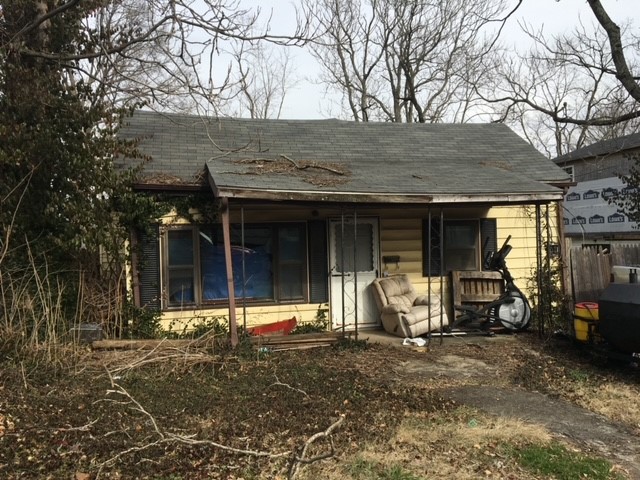
(1) Photos by author.
Close to Home
I have the privilege to serve as chief of the Georgetown (KY) Fire Department, just north of Lexington. Georgetown is one of the most affluent communities in the state. We have been home to the Toyota Motor Manufacturing of Kentucky (TMMK) since 1986. In the past three decades, I have seen Georgetown grow from a sleepy town to the fifth-largest city in the state. On its own, TMMK employs nearly 11,000 people.
In my previous role as fire marshal, I dealt with new neighborhood developments, box stores, and industrial and commercial properties every month. We have many factories that are suppliers for Toyota and the growth and opportunities for jobs in my hometown are not slowing down anytime soon. I say all this just to emphasize that with all the great things happening in Georgetown, we still have a homelessness problem.
We as a city are working to address the root causes of homelessness. As a community, we need to help those on the streets, regardless of what decisions or circumstances led them there. In a community that is thriving, lifting others up and assisting them are the steps we need to take. And abandoned and dilapidated structures, combined with homelessness and crime, can—and will—lead to firefighter fatalities. The only way to avoid this is by changing the situation before the tones go off and we’re responding to a fire in one of these properties.
What Can We Do?
So how can a fire department be proactive in ridding its community of these blighted properties, either through demolition or compliance with bringing the property back to standards that meet the code? Through much trial and error, Georgetown has drastically changed the face of our community, increasing property values and, more importantly, reducing the risk of injury or death to civilians and firefighters. I am proud of how far we have come in just a few years, and I hope that by sharing my knowledge it will help other communities tackle this issue.
Shortly after I became fire marshal in 2015, I contacted our code enforcement officer and asked if he could give me a list of all the condemned properties in Georgetown. To my surprise, he advised that there were no such properties. I was in disbelief. As a firefighter and captain, I had encountered numerous horrid properties that I knew should have been condemned. Now that I was the fire marshal, I felt I could finally do something about these properties. But cleanup was not the only issue on my mind.
Like it or not, the idea of cleaning up communities takes a backseat to the safety issues these properties pose to our firefighters. I had a hard time sleeping at night as I stressed over the idea that one of our members could die in a building that shouldn’t even be standing. Once I heard that none of the problem properties in our community had been condemned, I started to work toward a solution (photo 1).
Moving in the Right Direction
I drove through our city and documented problem properties. It didn’t take long for me to come up with a list of locations that needed to be addressed. I knew we couldn’t tackle every property at once, so I took it one step at a time. I prioritized the biggest concerns and asked for a meeting with our mayor and city manager. I think they were shocked by the results. Seeing the number of issues in Georgetown proved to be an eye-opening experience for everyone. We all agreed that action needed to be taken.
Soon after, the mayor asked me to help revamp the code enforcement office Georgetown already had in place. This office was under the supervision of our police department. At that time, code enforcement consisted of just one officer. He was tasked with handling the operations throughout our county, not just in Georgetown. This included the rural areas of Scott County and two smaller cities. This is a lot of ground to cover, so the code office worked by fielding phone complaints that came in. If we were going to be proactive moving forward, two big changes had to take place:
- We needed to change the way we identified issues.
- We needed more staffing for the office. This job was too big for one person to handle if we were going to address the issues we were facing.
Fortunately, our administration agreed with me on both matters. The city agreed to hire an administrative assistant and an additional code enforcement officer. This was a huge step in getting us to where we needed to be.
Once the additional staff was in place, the next step was for us to speak with the key players in the community. We held meetings with property owners, real estate agents, and developers. We were going to be more progressive with our standards, so we needed the community to understand what we were going to be doing. This was all new to them, so it was only fair that we communicated with them.
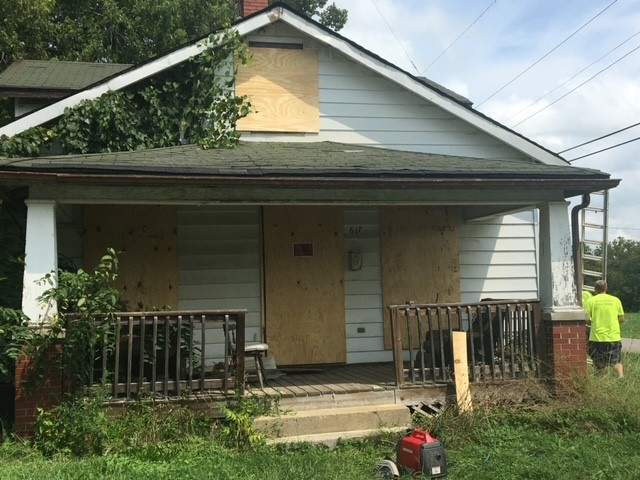
(2)
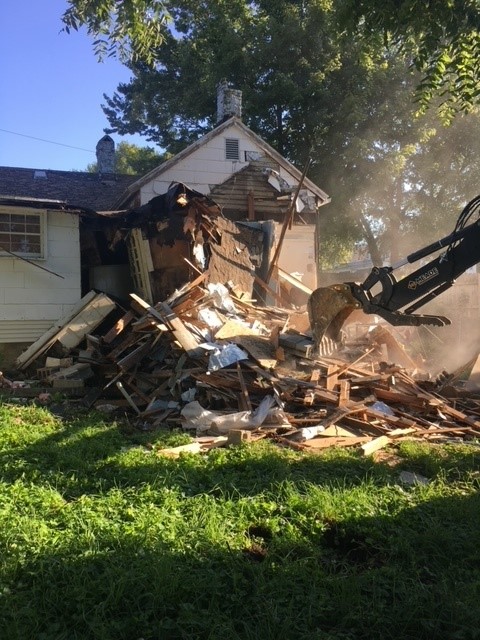
(3)
Informing the Public
Another way we pushed out our messaging was with a “Top 10 Code Violations” list. Code enforcement is about much more than derelict properties. Overcoming challenges like tall grass, unapproved outside storage, and junk cars parked in yards is just as important to a community when it comes to tackling problems that could lead to larger issues down the line. They create access issues for the fire department and other emergency services.
By using social media and handing out printed copies of our top 10 code violations, we educated the public on what code enforcement does and the benefits of having a strong enforcement office. The public was receptive to the changes and wanted to see these issues addressed.
The way we identified issues also changed. Instead of being reactive and waiting for people to call the office to tell us of a concern, we started driving around the community to identify issues ourselves. We took a patrolling approach to identify nuisances and hazards. Being in the community, we were able to address problems before they got out of control.
We also communicated with members of the community with door hangers. If someone left their trash can out too long or parked their car in the yard, we would place a door hanger to let them understand that this was a code violation. If the suggestion went ignored, we would then go through the notice-of-violation phase. This step in our process allowed us to show some grace to those who may not have known they were breaking ordinances, educate them, and keep our staff from having to spend time going through a formal process.
Most of the time it resolved the issue quickly. You may be wondering why we focused efforts on dealing with grass complaints and cars in the yard. To have a code enforcement system that the public considers legitimate for addressing big problems, we had to address the smaller issues in our ordinances as well.
Internal Changes
It wasn’t long after we took these steps in the right direction with code enforcement that the original code enforcement officer retired. When he did, I was asked to take on the additional responsibility of overseeing code enforcement in my position as the fire marshal.
I was excited for the opportunity and soon this office fell under the fire department. We hired another code enforcement officer and started getting to work. We made our code employees know they were part of the team. They donned the uniform of the fire department and recognized they were indeed making positive changes to their community.
We built momentum. Within a three-year span, we condemned more than 150 properties and demolished more than 50 structures in our county. The vast majority of these were in Georgetown. Once we started cleaning up neighborhoods, these lots sold. Now we have new construction taking place. Properties that were a drain on our city because of the money we were spending to abate them and that had low property values no longer require abatement. And now they are generating more tax money because of the increased value on assessments of these properties as well as neighboring homes. This is a huge selling point for your community. Taking a property that is a burden and making it productive is a win for everyone.
I am now chief of the Georgetown Fire Department, and I remain a huge proponent of code enforcement. I am thrilled to be able to share our success story and hope it can help you do the same for your community. These steps will help make your community more appealing; cleaner; and, most importantly, safer for your firefighters.
10 Key Points and Steps for Moving Forward
Here are some key points to keep in mind as you move forward on your journey with a productive and progressive code enforcement office.
1. Communicate with Leadership.
Work with your government leadership to lay out a game plan that identifies the following:
- What properties you want to tackle.
- Why it is important to do so.
- What benefits this would have for your community.
- How you can accomplish this.
This is not a hard sell. Most people want their jurisdiction to be rid of these eyesores and the trouble they bring. As with anything, those sitting across from you will first mention budget. How is the community going to pay for this? What will be the return on the investment?
Some circumstances may allow for funding the program outright, while others may not. Jurisdictions that cannot fund a full-blown code enforcement office can explore grants, many of which are available to help clean up communities.
Furthermore, if your community demolishes a property, you can send the owner a bill. If the owner does not pay, you can place a lien on the property. Then, when the property is sold, you can recoup your money. We have done a lot of work in Georgetown, and our abatement budget is not massive.

(4)

(5)
2. Meet with Key Real Estate Players.
One of the very first things we did in the code enforcement office was set up a meeting with the property managers, real estate agents, developers, and investors of Georgetown. You aren’t going to be able to target everyone at first, but you know the individuals in your community who own or manage properties.
Explain the need to move forward with the code enforcement process. Inform them of what the next steps will be. Let them know that what was accepted will no longer be accepted. Lay out expectations and guidelines to help them help themselves.
One thing I learned as a fire marshal is that there are two types of people: those who don’t know what they don’t know and those who know better but choose not to be compliant. Most fall into the first category. They’re the easy ones to work with. Your authority as code enforcement will help with the latter.
3. Understand the International Property Maintenance Code.
As fire marshal, I had the authority to handle a wide range of issues when it came to multifamily apartment complexes, businesses, and high-occupancy areas. When it came to single-family dwellings and having the teeth to do certain things to bring to compliance, I didn’t have as much authority.
Our authority, along with NFPA standards and the power of the adopted International Property Maintenance Code (IPMC), opened so many options for tackling these problems in our community. IPMC is the bible as far as code enforcement. For communities, adopting its standards is a must if your goal is to take on the challenges of cleaning up your community and increasing safety.
4. Reference State Statutes.
Kentucky’s lawmakers realized that abandoned properties and nuisance issues were a problem and wanted to address them head on. The legislature passed laws regulating how jurisdictions could implement citations and notices of violations as well as the time frame for abatement from homeowners before the city could directly address these problems. It also gives guidance on other issues that can and will arise, such as fines and the statute of limitations. Using state legislation and adopting through your local ordinances will give your department the power it needs to implement positive change in your community.
5. Have a Reporting Program.
Your fire department has already used reporting programs to do National Fire Incident Reporting System reports, so there will already be some familiarity on how to write them.
We use a program that helps us track dates and time between the notice of violation and when we can send out the citation. This also helps us know when the timeframe for abatement is over. Also, it enables us to track the fines and interest associated with those fines if they are not paid. We can upload all our ordinances to the program and use those as we write the reports. If your jurisdiction is not budgeted for a program like this, it’s OK. Use your current program and keep a spreadsheet to track dates, fines, and other relevant details to move forward with a code enforcement program.
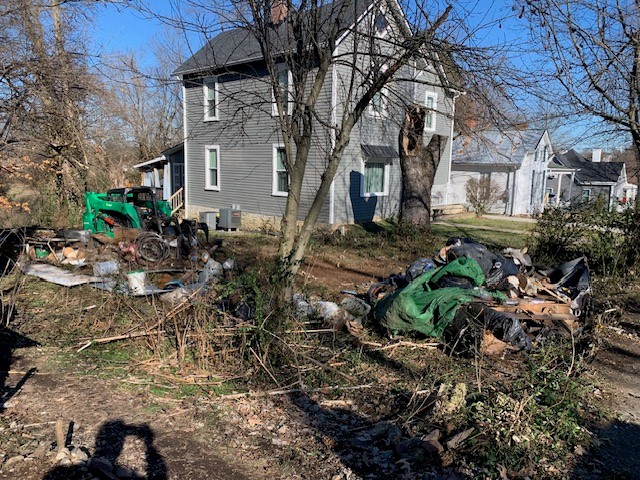
(6)
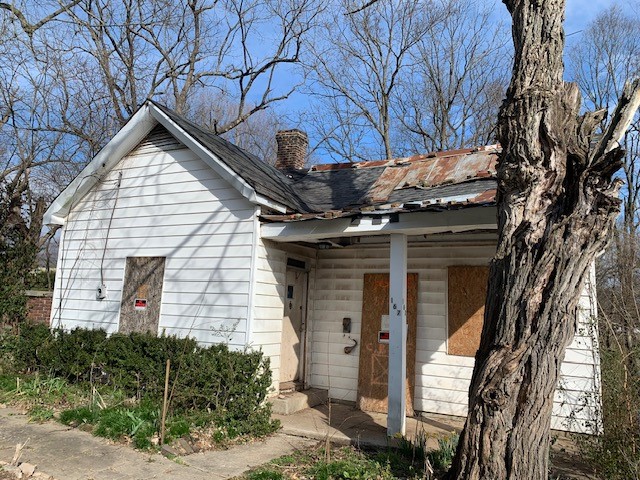
(7)
6. Keep Abatement Contracts in Place.
To complete the abatement process, you will either need to use your jurisdiction’s own employees, such as public works, or hire contracted workers. We bid out for contract labor to do anything from mowing to boarding up windows and doors to demolition. We also have contract labor to do asbestos inspections on properties. Having all this in place will help get properties cleaned up in a timely manner. This is a crucial step to give your code office legitimacy.
7. Work with People.
A lot of the houses we condemned were too far gone for the next step to be anything but demolition, but this is not always the case. Fixing the roof, replacing windows, repairing a floor, and getting utilities are all ways to work toward a removal of the condemnation.
When homeowners say they want to rehabilitate a recently condemned home, we require a plan of action from them, provided that the home does not pose an imminent threat to the public. If the homeowner fixes the property and gets it back to being a productive home, that’s a win for the taxpayers.
8. Follow Due Process.
Unless you are dealing with imminent danger, you must follow due process. Dangers to residents of the home, their neighbors, or the community at large must be dealt with in a timely manner. On other occasions, you must give people time to clean up their mess. Again, in many cases, people do not realize that they are breaking ordinances in the first place.
As you continue to work, more and more people will realize what will and what won’t be tolerated in your community. We have had a rock-solid enforcement agency for almost five years, and we are still dealing with people who aren’t aware of the ordinances. Remember that people may come into your community from a city that didn’t enforce codes. It’s critical to communicate to them that their new community—your community—is different.
9. Grow Thick Skin.
This job is not for the faint of heart. You will deal with slumlords who want to manipulate the situation and delay any remedies to the problems that they have caused. You will be cursed out and yelled at by those who think that what your city is doing is wrong. There will be people who know better but won’t do better. It is all part of the process. At the end of the day, it is worth it because you are keeping your community and your firefighters, police, and EMS workers safe.
10. Share Your Success Stories.
With all our successes in the code office, we could have done a better job of telling our story and communicating what we accomplished. We knew we were making a difference. The neighbors of these dilapidated properties knew we were making their homes increase in value. And the people we helped educate about what needed to be done knew. Still, the larger community should always hear about these successes.
I am proud of the work that we have accomplished in Georgetown by bringing the code enforcement office into our fold. The officers love being part of this department and we love having them. The work they do for our community and for the safety of our responders is incredible.
TIM THOMPSON is a 19-year veteran of the Georgetown (KY) Fire Department. He has served in the rank of firefighter, captain, fire marshal, assistant chief of prevention, and chief. He is a member of the Kentucky Association of Fire Chiefs, where he is a district vice president and chairman of the Health and Safety Committee.

